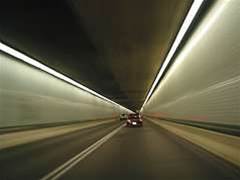Ofcom has released research showing that UK broadband customers receive speeds that are significantly slower than those advertised by providers.
The average speed advertised by broadband providers is 7.1Mbit/s, but the telecoms regulator revealed in the UK Broadband Speeds 2009 Research Report (PDF) that the actual average in April this year was 4.1Mbit/s.
Ofcom's research follows the Digital Britain (PDF) report, which includes plans to achieve broadband access speeds of at least 2Mbit/s in all UK households by 2012.
One in five UK homes currently receives less than 2Mbit/s, according to the Ofcom report.
However, Chris Marling, editor of broadband comparison site Broadband Genie, claimed that the situation is even worse than the Ofcom report suggests.
"People may be disappointed to see an average real broadband speed of less than half the 'up to' speed advertised by their ISP, but in truth what the consumer experiences is even worse," he said.
Marling pointed out that the Ofcom tests do not take into account further slowdowns from Wi-Fi connections and PC issues.
"Comparing the Ofcom results to our own, we estimate that the actual speed customers get to work with is often between 50 and 75 per cent of that quoted here, which could be 1Mbit/s to 2Mbit/s slower," he added.
Until the Ofcom report, there has been little information on the actual speeds delivered by ISPs, even though the measurement is increasingly important as internet users download more video and audio.
To test the speeds of different broadband providers the government monitored equipment in over 1,600 UK homes for six months, running 60 million tests by the end of April 2009.
The sample was said to be representative of UK broadband users as a whole, and allowed a comparison between the UK's nine largest broadband providers: AOL, BT, O2, Orange, Plusnet, Sky, Talk Talk, Virgin Media and Tiscali.
Virgin Media offered the highest broadband speed of 8.1Mbit/s to 8.7Mbit/s, while Tiscali gave consumers the poorest deal with an average of 3.2Mbit/s to 3.7Mbit/s.
Ofcom explained that the slower than advertised speeds were often due to DSL broadband slowing as users get further away from the exchange.
The research also showed that those living in urban areas received average broadband speeds of 4.6Mbit/s, significantly faster than those in rural areas who had an average of 3.3Mbit/s.
Additionally, cable broadband providers and DSL providers experienced slower broadband speeds during peak times because of capacity issues, Ofcom said. For example, speeds were 20 per cent slower during the hours of 8pm to 10pm than during the rest of the day.
The government said that it hopes the report will give operators more incentives to compete on performance, and invest in new technologies and capacities that provide consumers with faster broadband services.
In December 2008, a voluntary Code of Practice on Broadband Speeds encouraged ISPs to tell customers the maximum speed they can expect from their services and why actual speeds can differ from headline speeds.


.png&h=140&w=231&c=1&s=0)


_(22).jpg&h=140&w=231&c=1&s=0)



_(26).jpg&w=100&c=1&s=0)

 iTnews Executive Retreat - Security Leaders Edition
iTnews Executive Retreat - Security Leaders Edition












_(1).jpg&h=140&w=231&c=1&s=0)



